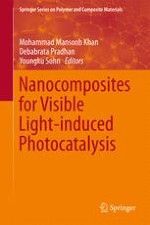This book details the chemistry of visible light-induced photocatalysis using different classes of nanocomposites. Starting with a general introduction and explanation of basic principles and mechanisms of (visible) light-induced photocatalysis in the first two chapters (not omitting a plaidoyer for furthering research and development in this promising field), the following chapters detail the different types and classes of nanocomposites currently used in light-induced photocatalytic applications, including e.g. metal and mixed metal-oxide nanoparticles and –composites, nanoporous materials, polymeric and carbon-based nanocomposites. They explain the characteristics and importance of the different types of nanocomposites, as well as their synthesis and fabrication.In the end of the book an outlook on the unique applications of novel nanocomposites is offered, for example in water treatment and disinfection and removal of pollutants from wastewater, self-cleaning window panes based on photoactive materials, and many more. The book also addresses the challenges in present photocatalytic research, and therefore is a must-read for everybody interested in the developing field of nanocomposites and visible light-induced photocatalysis.
